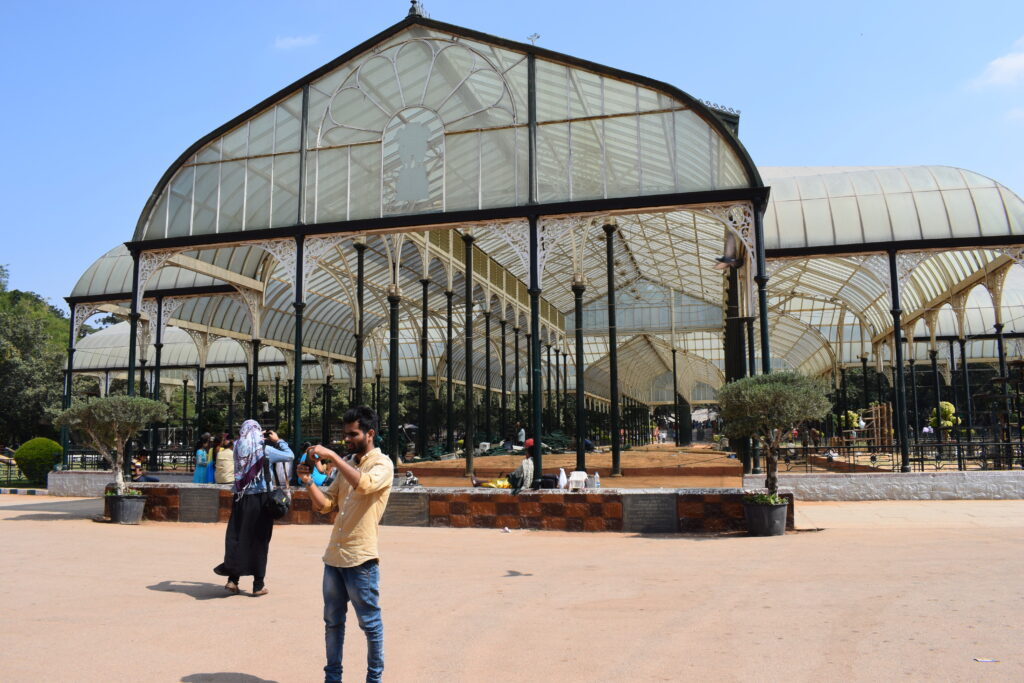Lalbagh is to Bengaluru what Kew Garden is to London. The iconic botanical garden in the heart of Bengaluru has been witness to expansion of the city around and away from its periphery during the last 250 years inasmuch as their histories have run on the same axis. Despite its international fame and its association with several botanists and horticulturists from the Kew Garden, there had been no single source from where its history could be known. Patches of it could be had from several documents, archives and websites. Thanks to the Bangalore Environment Trust, a book comprehensively documenting its history has been published recently.
Lalbagh: From Sultan’s Garden to Public Park authored by Vijay R. Thiruvady captures origin, growth, lives and contributions of noted botanists who worked incessantly to make Lalbagh what it is today and the wonders that the garden hides in its bosom. The author is known for his “Lalbagh Heritage Walks” on weekend mornings, having taken nearly 3,500 visitors, through the garden since 2005. Included among the visitors were worthies like renowned journalist Thomas Friedman and world famous ceramicist Kate Malone.
Origin of Lalbagh
Compared to several other cities, Bengaluru’s history does not go further than half a millennium. City’s founder Kempegowda erected four towers on four corners to define the city’s limit in 1537. The earliest of them came up atop the three billion old geological rock (a jaw-dropping figure indeed!) within the Lalbagh. Though the old crumbling structure has been replaced by a new replica, it retains its iconic status as the signpost of the city’s origin. Curiously, the city’s municipal corporation (BBMP) uses the same on its logo. Kempdgowda is said to have laid a small flower garden (huvina thotta in Kannada) which was in ruins by the time the land around the rock was bestowed as a jagir to Hyder Ali, by the Mysore ruling family of Wodeyers. However, the original Lalbagh was in Srirangapatnam, which the author informs, was destroyed by the British following the fall of Srirangapatna in the 4th Anglo-Mysore War in 1799 leading to Tipu’s martyrdom. Hyder is said to have raised the garden as a private royal retreat. Surprisingly, the garden still has Zenana Road for use of the princesses of the family.

Tipu’s contribution
Tipu had cultivated active contacts with the French and got several exotic species, seeds and saplings to be grown in the garden. He got several other plants from Mauritius, Cape of Good Hope, Turkey, Iran and other parts of the Middle East. Thiruvady writes: Tipu’s experiments in botany and horticulture have had a lasting impact inasmuch as establishing Mysore as a pioneer in horticulture, sericulture and agro industries” (page 17). Tipu is also credited for importing Chakotha or pomelo trees from China and Thailand and promoting extensive cultivation of it in the outskirts of Bangalore. Today this famous citrus fruit bears a geographical indication (GI) tag of its own.

Evolution
Once Bengaluru came under the British dominion, they took good care of it. It was H. F. C. Cleghorn, though a surgeon by training, but a polymath in the real sense, who recommended it to be officially named ‘Lalbagh’. It was he who steadied its path to be developed as a botanical garden, imparting it a direction and objectives. Five Kew-trained gardeners (two Englishmen, one German and two Indians) helmed the garden. Flower shows began from 1857 and continue to this day coinciding now with August 15 and January 26. The famous Glass House, the venue for many a historic conclaves, came up in 1891. Bandstand, a fixture of British gardens, was erected in 1867 where Army bands played music every evening. Around 130 illustrations of rare regional flora got executed by the Indian artists (some of them not named) have been reproduced in the book. These drawings and sketches were sourced from the archives of Royal Botanical Garden at Edinburgh and speak for themselves the care and the originality of pigments used. A chapter has been devoted to experiment with coffee-growing and its propagation in Malnad region. Lalbagh was also home to developing new varieties of potato and propagation of Rickett’s potato (known as ‘Kidney potato’).

German botanist
The book extensively deals with the life and contribution of legendary German horticulturist Gustav Hermann Krumbiegel, superintendent of Lalbagh (1908-1932) who was instrumental in vast landscaping (also at Brindavan Garden near Mysore). He is also credited for setting up a museum in Lalbagh, constructing the pleasing edifice of the Directorate of Horticulture and installing the equestrian status of Mysore Maharaja Chamrajendra Wodeyer. Unfortunately, his loyalty to the British was suspected and had to suffer internment during two World Wars, although his wife was a British. The book also compiles exceptional contributions made by latter day horticulturists H. C. Javaraya and M. H. Marigowda whose role in taking the Lalbagh experiments to the entire State were extraordinary.
With superb production, the 150-page book has been published by the Bangalore Environment Trust and is priced at Rs. 150. The book, besides being a chronicle of the history, documents the medieval botanical wisdom and aesthetics that played a role in designing some of the finest gardens in India.
M A Siraj is senior journalist based in Bengaluru. He writes for several publications in the country.

